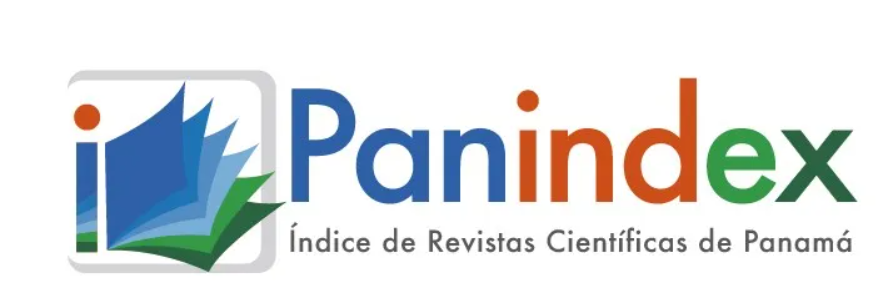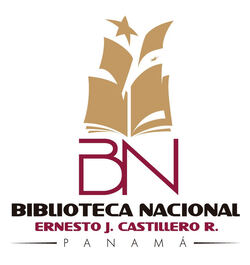The content of the publications and the links suggested in them are the sole responsibility of the authors and not of the Metropolitan University of Education, Science and Technology (UMECIT) or of the journal ORATORES. They are protected by international copyright laws as well as the logos of UMECIT AND ORATORES, hence their reproduction is totally prohibited.
This work is licensed under a Creative Commons Attribution-NonCommercial-NoDerivatives 4.0 International License.
The authors maintain the copyright and transfer the right of the first publication to the journal, with the article registered with Creative Commons Attribution-NonCommercial-NoDerivatives License, which allow others They can download the works published in this magazine and share them with other people, as long as their authorship is recognized, but they cannot be changed in any way nor can they be used commercially.
Authors are recommended to include their work in social networks such as Researchgate and institutional repositories once the article or visible fact has been published on the journal page, without forgetting to include the digital document identifier and the name of the journal.



Abstract
This essay reviews the different derivations of the discipline, placing more emphasis on inter/trans-disciplinary methodologies as a conscious and creative transformation, association, linking and interaction model of the disciplines that emerges as an alternative solution to the complex problems facing science today. To talk about the border of knowledge, it is necessary to ask ourselves: What is the limit? When referring to all those partitions, divisions and segmentations that exist, it is the representation of a border marking of something, in short, the limit means not being exceeded under any circumstances. In other words, it is the point, whether physical or psychological, that cannot be crossed. When this limit is debated in the sciences, there is a certain tension and discomfort between the disciplines. Inter/transdisciplinarity does not seek to challenge the legitimacy of disciplinary knowledge, on the contrary, they decide to reaffirm their traditions by stimulating certain disciplinary articulation and integration gestures, inter/transdisciplinary studies have progressively gained ground in universities and the research environment to be considered a transversal axis of their substantive functions, but they have lost their theoretical density and also their intellectual subtlety by becoming very polysemic concepts in the academic and, above all, practical fields where few specific strategies are evidenced that promote This articulation and disciplinary and curricular integration begins.
Keywords
References
Carvajal, Y. (2010), Interdisciplinariedad: desafío para la educación superior y la investigación. Revista Luna Azul ISSN 1909-2474 No. 31, julio-diciembre 2010.
Delgado, C. (2018), Investigar desde el pensamiento complejo. Editor científico Multiversidad Mundo Real Edgar Morin, A.C. México
Espinoza, A, (2011), Estrategias metodológicas para operacionalizar la práctica educativa transdisciplinaria, en conjunto con los actores universitarios, en las licenciaturas del Centro de Estudios Universitarios Arkos (CEUArkos) de Puerto Vallarta, Jalisco, México. Revista Electrónica Educare, ISSN-e 1409-4258, Vol. 15, Nº. 1, págs. 31-56
Koppen, Mansilla & Miramontes, (2005), La interdisciplina desde la teoría de los sistemascomplejos.
Lenoir, Y. (2015). Interdisciplinariedad en educación: una síntesis de sus especificidades y actualización. INTER DISCIPLINA, 1(1). https://doi.org/10.22201/ceiich.24485705e.2013.1.46514
López Huancayo, I. (2019).El papel de la interdisciplinariedad en la enseñanza aprendizaje de la matemática.Formaciónib.Obtenido de http://formacionib.org/noticias/?El-papel-de-la-interdisciplinariedad-en-la-ensenanza-aprendizaje-de-la-697
Luengo, E, (2021), Hacia la síntesis de conocimientos. Interdisciplina, transdisciplina y complejidad. Espiral (Guadalaj.) vol.28 no.80 Guadalajara ene./abr. Epub 11-Jun. ISSN 1665-0565.
Manfred A. Max-Neef. (2004), Fundamentos de la transdisciplinaridad. Universidad Austral de Chile, Valdivia, Chile
Martínez, M, (2012), «Conceptualización de la transdisciplinariedad», Polis [En línea], 16 | 2007, Publicado el 31 julio 2012, consultado el 19 abril 2019. URL : http://journals.openedition.org/polis/4623
Morin, E. (1984), Ciencia con conciencia. Barcelona: Anthropos
Morin, E.Sobre la interdisciplinariedad. TOMADO DE: www.pensamientocomplejo.com.ar bajado el día 15 de julio del 2015.
Munné, F. (2004). ¿Qué es la complejidad? What's complexity?. Universidad de Barcelona https://teoriadacomplexidade.com.br/wpcontent/uploads/2021/07/QueEsLaComplejidad.pdf
Muñoz, C. (2010), El rol de la metáfora léxica en la divulgación de la ciencia. Tabula Rasa. Bogotá - Colombia, No.13: 273-292, julio-diciembre 2010 ISSN 1794-2489
Nicolescu, B. (1998). La transdisciplinariedad [Manifiesto]. Recuperado de http://www.ceuarkos.com/manifiesto.pdf
Osorio, S. (2012), el pensamiento complejo y la transdisciplinariedad: fenómenos emergentes de una nueva racionalidad. Universidad militar nueva granada. rev.fac.cienc.econ., Vol. XX (1), Junio 2012, 269-291
Paoli, Francisco José Paoli Bolio, 2018. MULTI, INTER Y TRANSDISCIPLINARIEDAD. Universidad Nacional Autónoma de México, IIJ-BJV, 2019.Recuperado de https://revistas.juridicas.unam.mx/index.php/filosofia-derecho/issue/archive Esta revista forma parte del acervo de la Biblioteca Jurídica Virtual del Instituto de Investigaciones Jurídicas de la UNAM. https://biblio.juridicas.unam.mx/bjv
Peñuela Velásquez, L. Alejandro. (2005). La transdisciplinariedad: Más allá de los conceptos, la dialéctica. Andamios, 1(2), 43-77. Recuperado en 25 de marzo de 2023, de http://www.scielo.org.mx/scielo.php?script=sci_arttext&pid=S187000632005000300003&lng=es&tlng=es.
Pérez Matos, Nuria Esther, & Setién Quesada, Emilio. (2008). La interdisciplinariedad y la transdisciplinariedad en las ciencias: una mirada a la teoría bibliológico-informativa. ACIMED, 18(4) Recuperado en 06 de marzo de 2023, de http://scielo.sld.cu/scielo.php?script=sci_arttext&pid=S102494352008001000003&lng=es&tlng=es.
Pérez, L. (2013). PENSAR EN ESCUELAS DE PENSAMIENTO Una aproximación interdisciplinar y transdisciplinar, capitulo Una mirada desde la ventana de la complejidad.
Polanyi, M. (1966), El estudio del hombre. Buenos Aires: Paidós.
Pupo, R. IMAGEN, METÁFORA, VERDAD. (Hacia una visión hermenéutica compleja).
Rivadulla, A. (2013), La filosofía de la ciencia hoy. problemas y posiciones. recuperado https://www.ucm.es/data/cont/docs/481-2013-10-14-filocien.pdf
Sotolongo, P; Delgado, Capitulo IV. La complejidad y el dialogo transdisciplinario de saberes. En publicación: la revolución contemporánea del saber y la complejidad social. Hacia unas ciencias sociales de nuevo tipo. 2006 ISBN 987-1183-33-X
The Random House College Dictionary. (1975). Nueva York: Random House, Inc
TORRES, Santomé, Jurjo. (2000). Globalización e interdisciplinariedad: El currículum integrado. Barcelona: Morata
Vargas-Madrazo, Enrique; Ruiz Cervantes, E. Eduardo; Houbron, Eric; Rojas-Molina, Joaquín; Pineda López, María del Rosario; Sánchez-Velásquez, Lázaro R. Estrategia sistémica para conformar colectivos colaborativos inter-transdisciplinarios: conocimiento al servicio de la sociedad Telos, vol. 24, núm. 2, 2022 Universidad Privada Dr. Rafael Belloso Chacín, República Bolivariana de Venezuela Disponible en: https://www.redalyc.org/articulo.oa?id=99371994010
Downloads
Publication Facts
Reviewer profiles N/A
Author statements
- Academic society
- Universidad Metropolitana de Educación, Ciencia y Tecnología
- Publisher
- Universidad Metropolitana de Educación, Ciencia y Tecnología



















